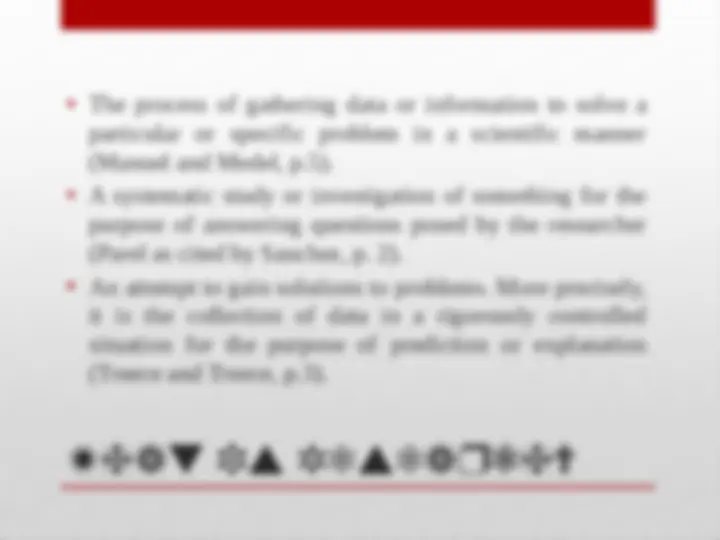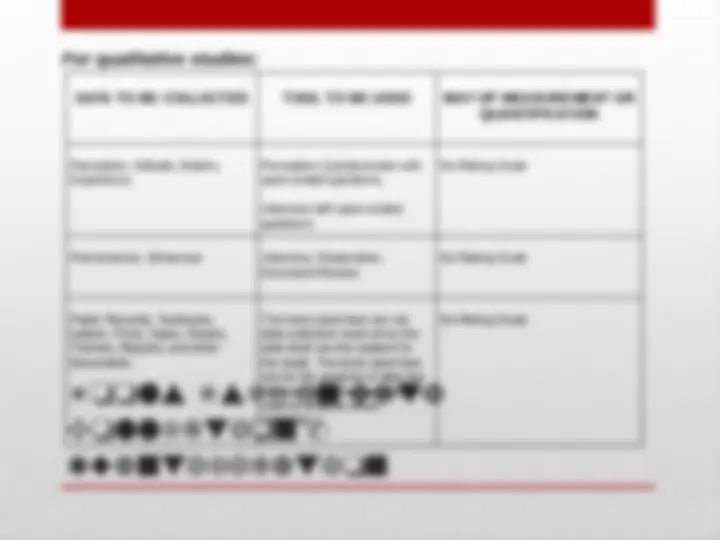







Study with the several resources on Docsity

Earn points by helping other students or get them with a premium plan


Prepare for your exams
Study with the several resources on Docsity

Earn points to download
Earn points by helping other students or get them with a premium plan
Community
Ask the community for help and clear up your study doubts
Discover the best universities in your country according to Docsity users
Free resources
Download our free guides on studying techniques, anxiety management strategies, and thesis advice from Docsity tutors
The nature of research is important.
Typology: Lecture notes
1 / 9

This page cannot be seen from the preview
Don't miss anything!






DICKSON P. PAGENTE, LPT, PhD Associate Professor V | Research Director College Department, SAIT
Purposes of Research
Research & Problem-solving
Tools Used in Data Collection & Quantification For quantitative studies: DATA TO BE COLLECTED TOOL TO BE USED WAY OF MEASUREMENT OR QUANTIFICATION Perception, Attitude, Beliefs Perception Questionnaire, Interview Rating Scale Level of Knowledge or Understanding Test, Quiz, Exam The score itself Skills Proficiency, Performance Rubrics, Checklist, Evaluation Tool Rating Scale Beauty (in beauty pageants) Criteria for Judging The score itself
Tools Used in Data Collection & Quantification For qualitative studies: DATA TO BE COLLECTED TOOL TO BE USED WAY OF MEASUREMENT OR QUANTIFICATION Perception, Attitude, Beliefs, Experience, Perception Questionnaire with open-ended questions, Interview with open-ended questions No Rating Scale Phenomenon, Behaviour Interview, Observation, Document Review No Rating Scale Public Records, Textbooks, Letters, Films, Tapes, Diaries, Themes, Reports, and other Documents The tools used here are not data collection tools since the data itself are the subject for the study. The tools used here are for the analysis of data like theories and other parameters used to analyse these materials. No Rating Scale